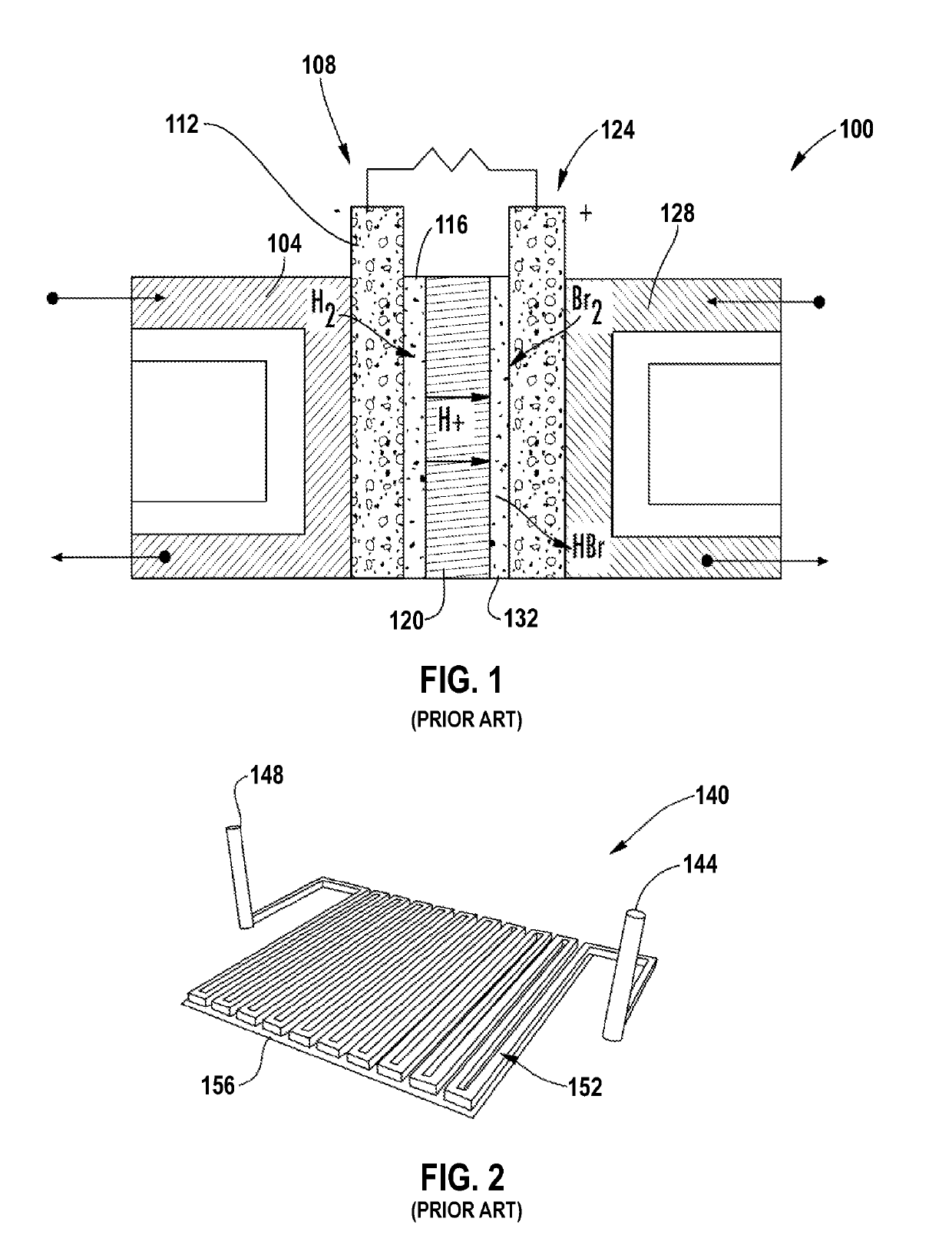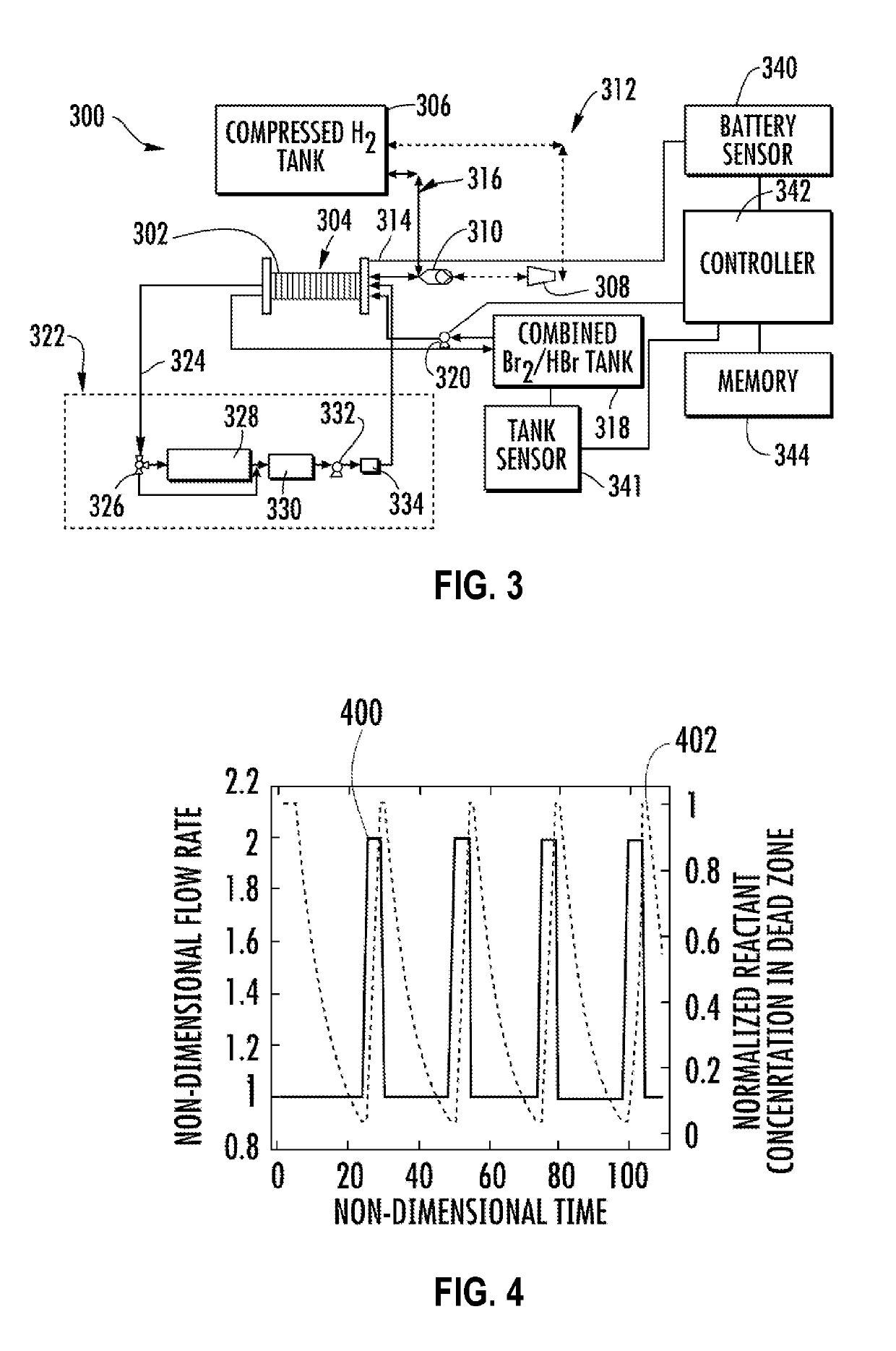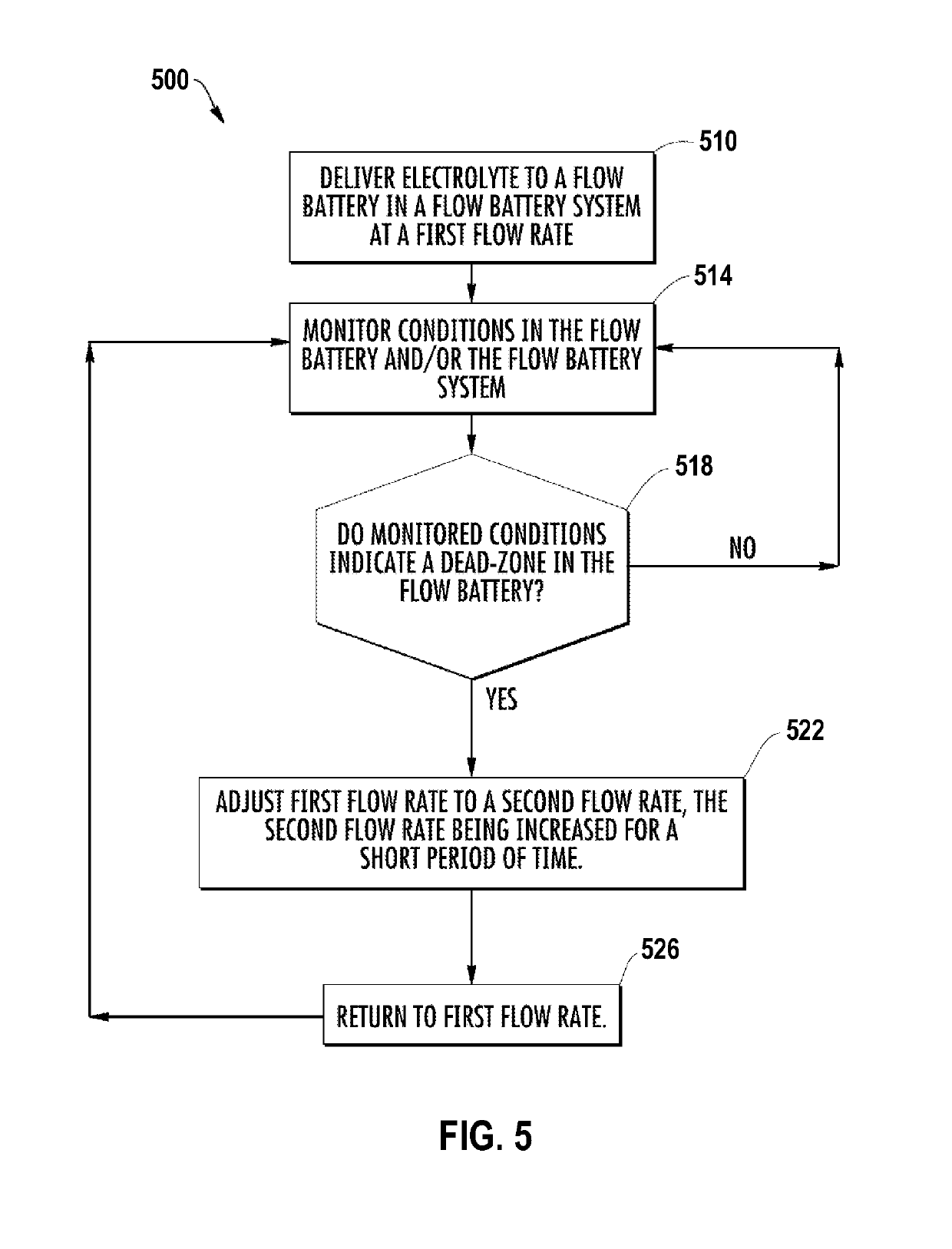System and method for minimizing transport related performance losses in a flow battery system
a flow battery and performance loss technology, applied in the field of rechargeable batteries, can solve the problems of only operating successfully flow batteries and flow battery systems, diffusive transport cannot be relied upon as a transport mechanism, and the concentration of active materials tends toward relatively small values, so as to achieve the effect of minimizing performance losses in the system
- Summary
- Abstract
- Description
- Claims
- Application Information
AI Technical Summary
Benefits of technology
Problems solved by technology
Method used
Image
Examples
Embodiment Construction
[0045]For the purposes of promoting an understanding of the principles of the embodiments disclosed herein, reference is now made to the drawings and descriptions in the following written specification. No limitation to the scope of the subject matter is intended by the references. The present disclosure also includes any alterations and modifications to the illustrated embodiments and includes further applications of the principles of the disclosed embodiments as would normally occur to one skilled in the art to which this disclosure pertains.
[0046]FIG. 3 schematically illustrates an embodiment an H2 / Br2 flow battery system 300 according to the present disclosure. A plurality of cells 302 are stacked together to form a battery stack 304. A supply tank 306 for the hydrogen gas H2 is coupled to a compressor 308, which is coupled to a pressure regulator 310. A mechanical compression line 312, in one embodiment, extends from the tank 306 through the compressor 308, through the pressure...
PUM
| Property | Measurement | Unit |
|---|---|---|
| area | aaaaa | aaaaa |
| energy density | aaaaa | aaaaa |
| reaction time | aaaaa | aaaaa |
Abstract
Description
Claims
Application Information
 Login to View More
Login to View More - R&D
- Intellectual Property
- Life Sciences
- Materials
- Tech Scout
- Unparalleled Data Quality
- Higher Quality Content
- 60% Fewer Hallucinations
Browse by: Latest US Patents, China's latest patents, Technical Efficacy Thesaurus, Application Domain, Technology Topic, Popular Technical Reports.
© 2025 PatSnap. All rights reserved.Legal|Privacy policy|Modern Slavery Act Transparency Statement|Sitemap|About US| Contact US: help@patsnap.com



